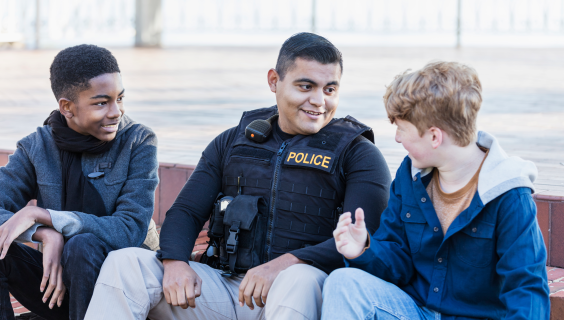Children Exposed to Violence Training and Technical Assistance Center (CEVTTAC)
Through CEVTTAC, AIR supports community violence interventions that focus on individual- and relational/family-level and community- and societal-level strategies.

The Children Exposed to Violence Training and Technical Assistance Center (CEVTTAC) at AIR supports children exposed to violence project sites/grantees (CVEPS) funded through the Office of Juvenile Justice and Delinquency Prevention.
Our provision of training and technical assistance helps CVEPS achieve project objectives related to building capacity of families and communities to more effectively respond to children exposed to violence and increase protective factors across all levels of a child’s social ecology. We do this by supporting community violence interventions that focus on individual- and relational/family-level and community- and societal-level strategies.
Through the CEVTTAC, AIR’s team of experts and partners—including juvenile justice, trauma informed care, and violence prevention experts, and public health leaders—incorporate the following into our training and technical assistance:
- Individualized targeted coaching that meets the CEVPS where they are in terms of the implementation lifecycle, starting with implementation readiness;
- Information sharing and peer-driven community learning (i.e., Communities of Practice) to encourage peer-to-peer learning; and
- Building implementation capacity among the CEVPS.
Community Violence Interventions (CVI)
- Group Violence Interventions - Collaborations among community leaders, social service providers, and law enforcement.
- Hospital-based Violence Interventions - Initial outreach beginning in hospitals for survivors of violence through connections with case managers and service providers for wrap around services.
- Violence Interrupters/Change Agents – Incorporating individuals who are skilled in community interventions and support change in their communities. Change agents build relationships and work to support healing, de-escalation, and mediation. They work to improve housing, education, and employment opportunities in their communities.
- Community Driven Crime Prevention Through Environmental Design - A multi-disciplinary strategy using urban planning, architectural design, and the management of built and natural environments to reduce gun violence.